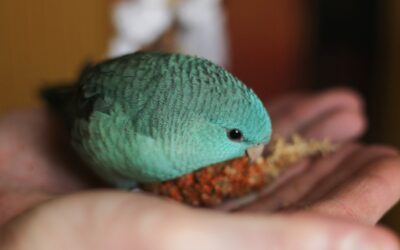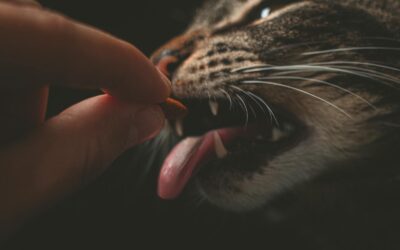When you think of keeping birds as house pets, the first thing that comes to mind is probably parrots, or maybe something small like a canary or a finch. But did you know it doesn’t end there? Although most folks don’t consider them past their usefulness for eggs and meat, quail can actually make wonderful pets. They’re tameable, friendly, and sometimes even snuggly. Their small size makes them much more manageable than something like a chicken.
In this post, let’s honor the humble quail! We’ll discuss types of pet quail that we here at Kate’s K9 Pet Care think have been totally overlooked as pets. If you’re looking to add a bird to your family, skip the parrots—they’re much more challenging to care for than most people think—and consider these rotund ground-dwellers instead.
What are quail, anyway?
For the uninitiated: quail are several groups of small to medium-sized ground-feeding birds in the order Galliformes. There are two scientific families of quail: Phasianidae (from the Old World, a family that also contains chickens, partridges, and similar) and Odontophoridae (from the Americas).
There are loads of different quail species, some of which have been domesticated by humans. They’re mainly kept for their meat, but they also lay tiny edible eggs that are often used as garnishes. Quail hunting, often using hunting dogs, is a popular pastime in parts of the United States, as many species of quail are native to North America.
Recently, quail have been becoming more popular as (house) pets. People seem to be catching on to the fact that these little birds aren’t just relatively inexpensive to keep and among the quietest pet birds, but also really sweet.
The secret to socializing your quail and being able to handle them is in choosing the right species (we’ll discuss them here) and simply spending lots of time with them. If you raise them yourself, hand-feed them daily, integrate them into the family, and understand their (social) needs, many can become very tame.

This selectively bred color morph of the Japanese quail is called “tuxedo”. We probably don’t have to explain why!
Our favorite types of pet quail
1. Japanese quail (Coturnix japonica)
Say hello to the most popular pet quail of all: Coturnix japonica, better known as the Japanese quail. Unlike what its name suggests, this Old World species isn’t just naturally found in Japan. It also inhabits the steppes, fields, and bushes of Russia, China, Korea, and according to some sources, even parts of Europe and Africa. The latter may be because human-bred quail are often released for hunting purposes.
Humans have been breeding Japanese quail for centuries, not just for their meat and eggs but also—originally in Japan—as songbirds. More recently, folks have discovered they can make useful garden or even house pets. Who doesn’t want an adorable addition to the family that can also lay eggs?
If you’d like to keep Japanese quail as pets, it’s best to hand-rear them yourself, as they can be skittish otherwise. In outdoor spaces, make sure your quail are safe from predators and have plenty of space to move around and forage. Indoors, frequent cleaning is a must to prevent smells, and it may be a good idea to keep just 2-3 hens to prevent the males’ louder crowing from bothering you.

2. Chinese painted quail (Synoicus chinensis)
Also known as king quail or sometimes (incorrectly) as button quail, the Chinese painted quail is one of the more decorative quail species you can keep as pets. If you’d like to keep your quail indoors, their small size makes them one of the better choices. They rarely grow to over 5.5″ in size! You can easily hold one in the palm of your hand, and newborn chicks are often noted to be no bigger than a bumblebee.
Naturally found in Southern China, Southeast Asia, and parts of Australia, Chinese painted quail are markedly sexually dimorphic (the males and females look different). As in many similar ground-feeding bird species, it’s the males that steal the show, with their mottled backs, blueish sides, and bright reddish-brown bellies. The girls are more camouflaged, but their speckled pattern still makes them quite nice to look at.
Keep in mind that Chinese painted quail are a little more fragile than the larger species. They like a stable, stress-free environment, plenty of hiding spots, and not too many males in each flock. Most aren’t very snuggly and don’t like being handled, though a hand-raised individual will likely still recognize their human owner as part of the flock.

3. California quail (Callipepla californica)
Look at that little head plume! The California quail, which is indeed mostly native to both the US and Mexican sides of California, is quite the looker. These native birds are usually kept in outdoor coops or aviaries. They’re not the best quail for beginners, but if you have some experience, you could consider trying your hand at raising some.
It’s important to consider this species’ needs in terms of housing. They’re easily spooked, so the aviary should be nice and tranquil. Include plenty of live grass, shrubs, and the like for cover. It’s best to avoid keeping your flock with other birds that may disturb them, and be sure to make the enclosure predator-proof. It should contain an area for dust bathing and a cover to prevent escape (quail do fly) as well as protect your birds from the weather.
Although they’re not among the most tameable species, spending plenty of time with your California quail and regularly hand-feeding them will ensure they recognize you and don’t take off in a blind panic every time you enter the aviary (known as flushing, which can result in injuries to the bird). They are very social, so it’s all about being recognized as part of the flock.

In quail, as in many birds, it’s the males that are the showier ones. The females are duller in color, but not in personality!
4. Bobwhite quail (Colinus virginianus)
Here’s another US native! Bobwhite quail are also known as Northern bobwhites or Virginia quail. They’re actually native to much of the eastern US, as well as parts of Canada and Mexico. These pretty quail are a little easier to keep than the aforementioned Californians, and if you have some indoor space, you could consider keeping a pair in your home instead of outside.
Bobwhites are often kept in mixed aviaries. If you can offer plenty of room, you can keep yours with peaceful parrot species, doves, finches, canaries, and the like. It’s not a must, though: a bobwhite-only aviary will still be lively and not boring at all. These social birds do best in groups, though be sure to keep more females than males (a 3:1 ratio works well) to avoid territorial issues.
Dedicated quail owners who spend plenty of time with their birds, like in an indoor environment, report their bobwhites becoming quite tame. They’re reasonably hardy and their unique calls are more endearing than annoying. In short, definitely a quail to consider!

5. Gambel’s Quail (Callipepla gambelii)
Have some experience keeping quail and don’t mind a pet that’s more decorative than cuddly? If you’re ready to become a Serious Quail Aficionado™, you could consider setting up a special outdoor aviary for the beautiful Gambel’s quail. Somewhat similar in looks and care requirements to the California quail, which belongs to the same genus (Callipepla), this species can be told apart by its rust-colored mohawk and non-scalloped belly.
Like California quail, the Southwest American native Gambel’s quail is considered a little more challenging to keep. Still, they’re well worth it if you like quail. They need a good bit of space, so they’re not the most suitable as indoor pets (although it has been done!).
As always, include plenty of live plants, perches, and hides to help your birds feel safe. A dust bath is a must, as are plenty of foraging opportunities.
Did you know? Because they’re native to the US, you may need a license or permit if you’d like to keep New World quail like Californians, bobwhites, and Gambel’s quail. Look up your local regulations before buying. The breeder or pet store may be able to tell you more about the requirements, but it usually shouldn’t be too difficult.

BONUS: Mearns quail (Cyrtonyx montezumae)
Avid Instagram Reels and TikTok users who also happen to love birds are sure to have come across Finn the quail, who became a feathered internet celebrity thanks to his human dad’s inclination to dress him up in quail-sized funky hats. This one’s for you fellow Finn lovers!
Finn is a Mearns quail, also sometimes referred to as a Montezuma quail. We didn’t include this species on the list above because it’s quite uncommon in captivity and generally not recommended to beginners due to its shy nature. However, it’s quite the looker. The males sport a lovely speckled body, brown underside, striking face pattern, and a pretty decent little crest. The females are duller in color.
Bird watchers in the southern US like keeping an eye out for Mearns quails. They’re mostly native to Mexico but do stray into Arizona, New Mexico, and West Texas. The species is considered rather elusive and quite difficult to spot, so seeing one is a nice treat.
Conclusion
In conclusion, if you want a bird, don’t overlook these types of pet quail as an option. There are a bunch of species to choose from, some of which can do well inside your home. They’re friendly, social, and not nearly as needy as a parrot. Which one’s your favorite? Let us know in the comments below!
PS: going on holiday? We love birds here at Kate’s K9 Pet Care and we’d be delighted to keep an eye on your quail while you’re gone.







